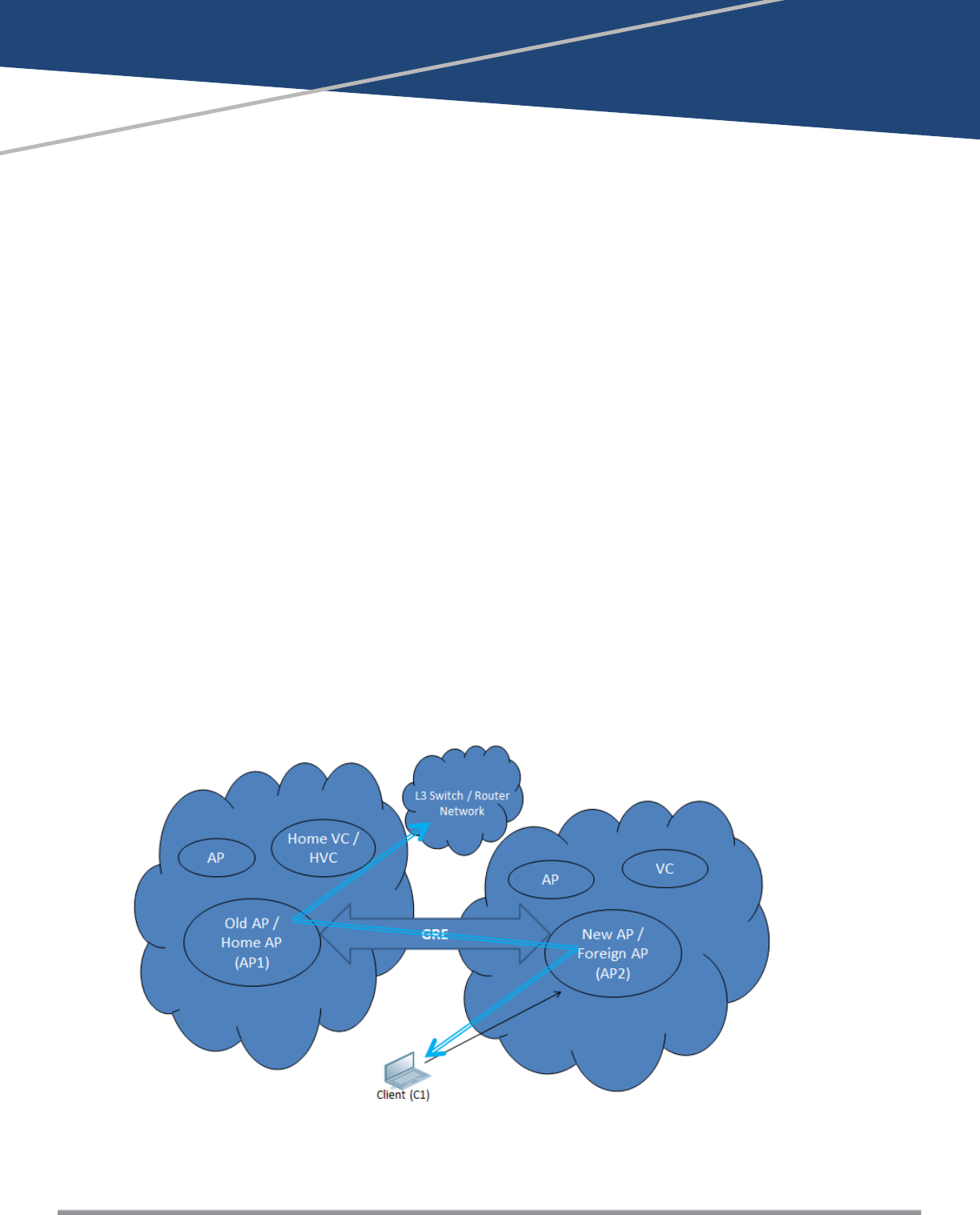Concept Guide
Table Of Contents
- About this Guide
- About Instant
- Setting up a W-IAP
- Automatic Retrieval of Configuration
- Instant User Interface
- Initial Configuration Tasks
- Customizing W-IAP Settings
- Modifying the W-IAP Host Name
- Configuring Zone Settings on a W-IAP
- Specifying a Method for Obtaining IP Address
- Configuring External Antenna
- Configuring Radio Profiles for a W-IAP
- Configuring Uplink VLAN for a W-IAP
- Changing the W-IAP Installation Mode
- Changing USB Port Status
- Master Election and Virtual Controller
- Adding a W-IAP to the Network
- Removing a W-IAP from the Network
- VLAN Configuration
- IPv6 Support
- Wireless Network Profiles
- Configuring Wireless Network Profiles
- Configuring Fast Roaming for Wireless Clients
- Configuring Modulation Rates on a WLAN SSID
- Multi-User-MIMO
- Management Frame Protection
- Disabling Short Preamble for Wireless Client
- Editing Status of a WLAN SSID Profile
- Editing a WLAN SSID Profile
- Deleting a WLAN SSID Profile
- Wired Profiles
- Captive Portal for Guest Access
- Understanding Captive Portal
- Configuring a WLAN SSID for Guest Access
- Configuring Wired Profile for Guest Access
- Configuring Internal Captive Portal for Guest Network
- Configuring External Captive Portal for a Guest Network
- Configuring Facebook Login
- Configuring Guest Logon Role and Access Rules for Guest Users
- Configuring Captive Portal Roles for an SSID
- Configuring Walled Garden Access
- Authentication and User Management
- Managing W-IAP Users
- Supported Authentication Methods
- Supported EAP Authentication Frameworks
- Configuring Authentication Servers
- Understanding Encryption Types
- Configuring Authentication Survivability
- Configuring 802.1X Authentication for a Network Profile
- Enabling 802.1X Supplicant Support
- Configuring MAC Authentication for a Network Profile
- Configuring MAC Authentication with 802.1X Authentication
- Configuring MAC Authentication with Captive Portal Authentication
- Configuring WISPr Authentication
- Blacklisting Clients
- Uploading Certificates
- Roles and Policies
- DHCP Configuration
- Configuring Time-Based Services
- Dynamic DNS Registration
- VPN Configuration
- IAP-VPN Deployment
- Adaptive Radio Management
- Deep Packet Inspection and Application Visibility
- Voice and Video
- Services
- Configuring AirGroup
- Configuring a W-IAP for RTLS Support
- Configuring a W-IAP for Analytics and Location Engine Support
- Managing BLE Beacons
- Clarity Live
- Configuring OpenDNS Credentials
- Integrating a W-IAP with Palo Alto Networks Firewall
- Integrating a W-IAP with an XML API Interface
- CALEA Integration and Lawful Intercept Compliance
- Cluster Security
- W-IAP Management and Monitoring
- Uplink Configuration
- Intrusion Detection
- Mesh W-IAP Configuration
- Mobility and Client Management
- Spectrum Monitor
- W-IAP Maintenance
- Monitoring Devices and Logs
- Hotspot Profiles
- ClearPass Guest Setup
- IAP-VPN Deployment Scenarios
- Acronyms and Abbreviations

Dell Networking W-Series Instant 6.5.1.0-4.3.1.0 | User Guide Mobility and Client Management | 338
Chapter 29
Mobility and Client Management
This chapter provides the following information:
l Layer-3 Mobility Overview on page 338
l Configuring L3-Mobility on page 339
Layer-3 Mobility Overview
W-IAPs form a single Instant network when they are in the same Layer-2 (L2) domain. As the number of clients
increase, multiple subnets are required to avoid broadcast overhead. In such a scenario, a client must be
allowed to roam away from the Instant network to which it first connected (home network) to another
network supporting the same WLAN access parameters (foreign network) and continue its existing sessions.
Layer-3 (L3) mobility allows a client to roam without losing its IP address and sessions. If WLAN access
parameters are the same across these networks, clients connected to W-IAPs in a given Instant network can
roam to W-IAPs in a foreign Instant network and continue their existing sessions. Clients roaming across these
networks are able to continue using their IP addresses after roaming. You can configure a list of VC IP
addresses across which L3 mobility is supported.
The Dell Networking W-Series Instant Layer-3 mobility solution defines a Mobility Domain as a set of Instant
networks, with the same WLAN access parameters, across which client roaming is supported. The Instant
network to which the client first connects is called its home network. When the client roams to a foreign
network, an W-IAP in the home network (home W-IAP) anchors all traffic to or from this client. The W-IAP to
which the client is connected in the foreign network (foreign W-IAP) tunnels all client traffic to or from the
home W-IAP through a GRE tunnel.
Figure 99 Routing of traffic when the client is away from its home network










